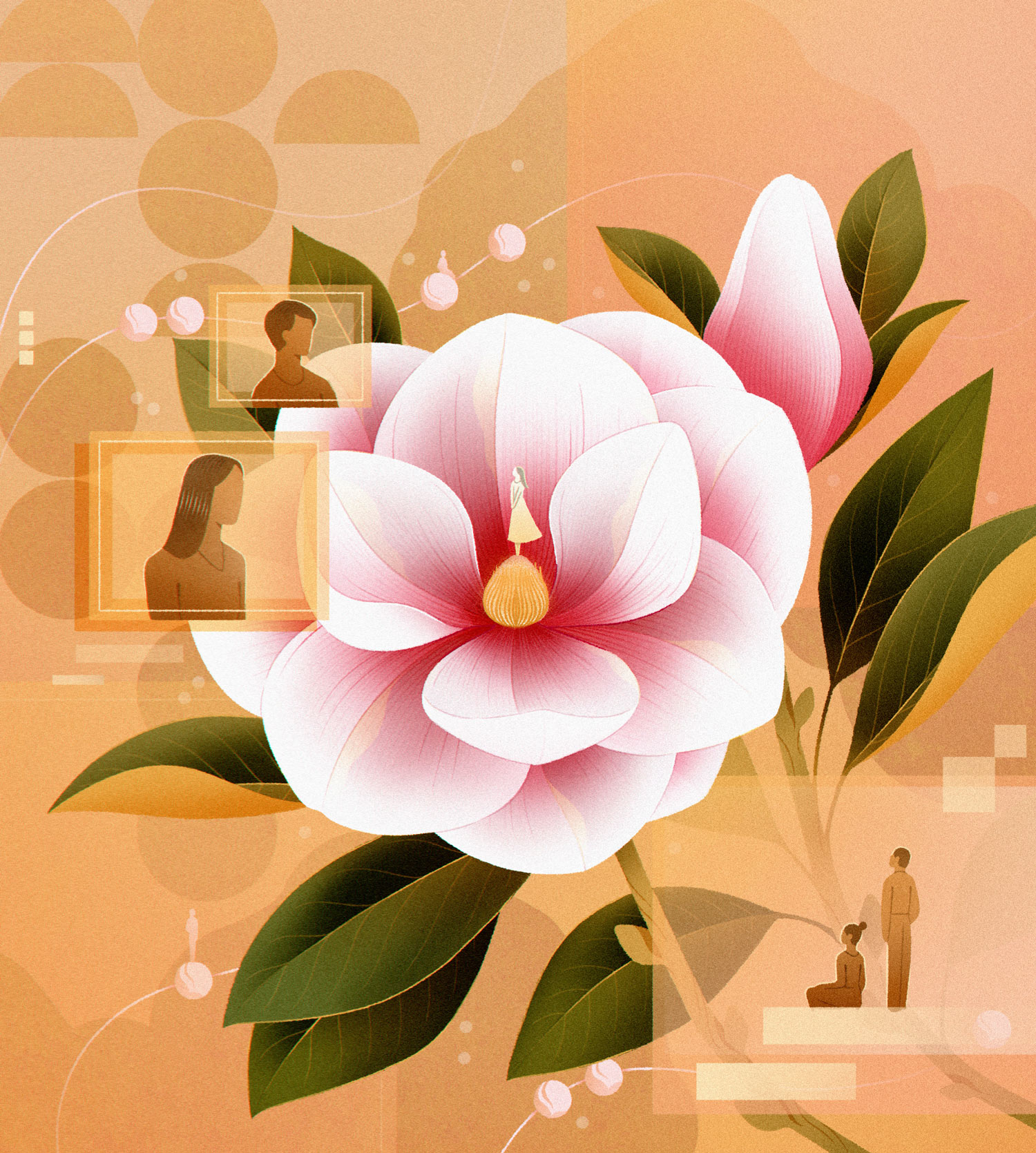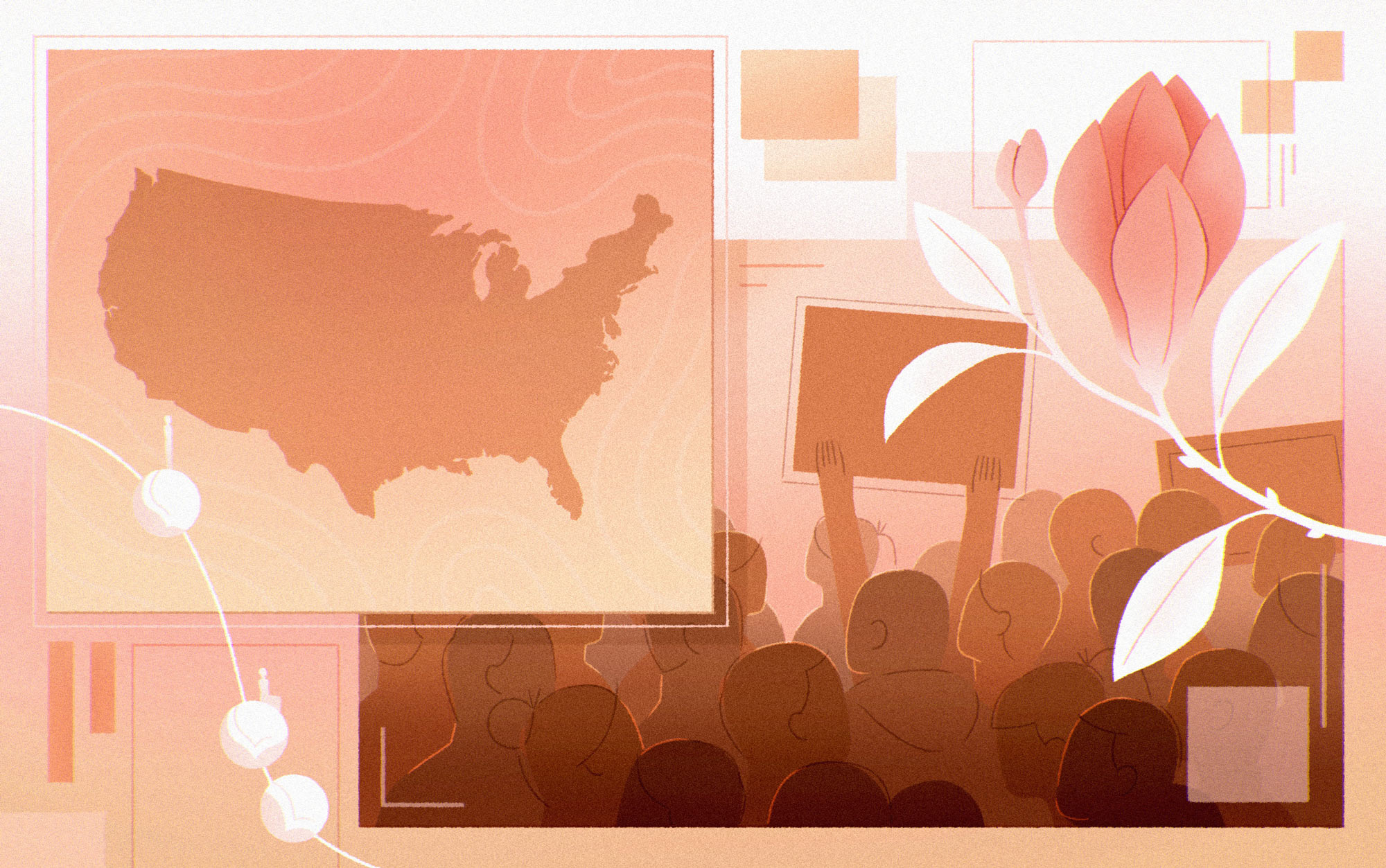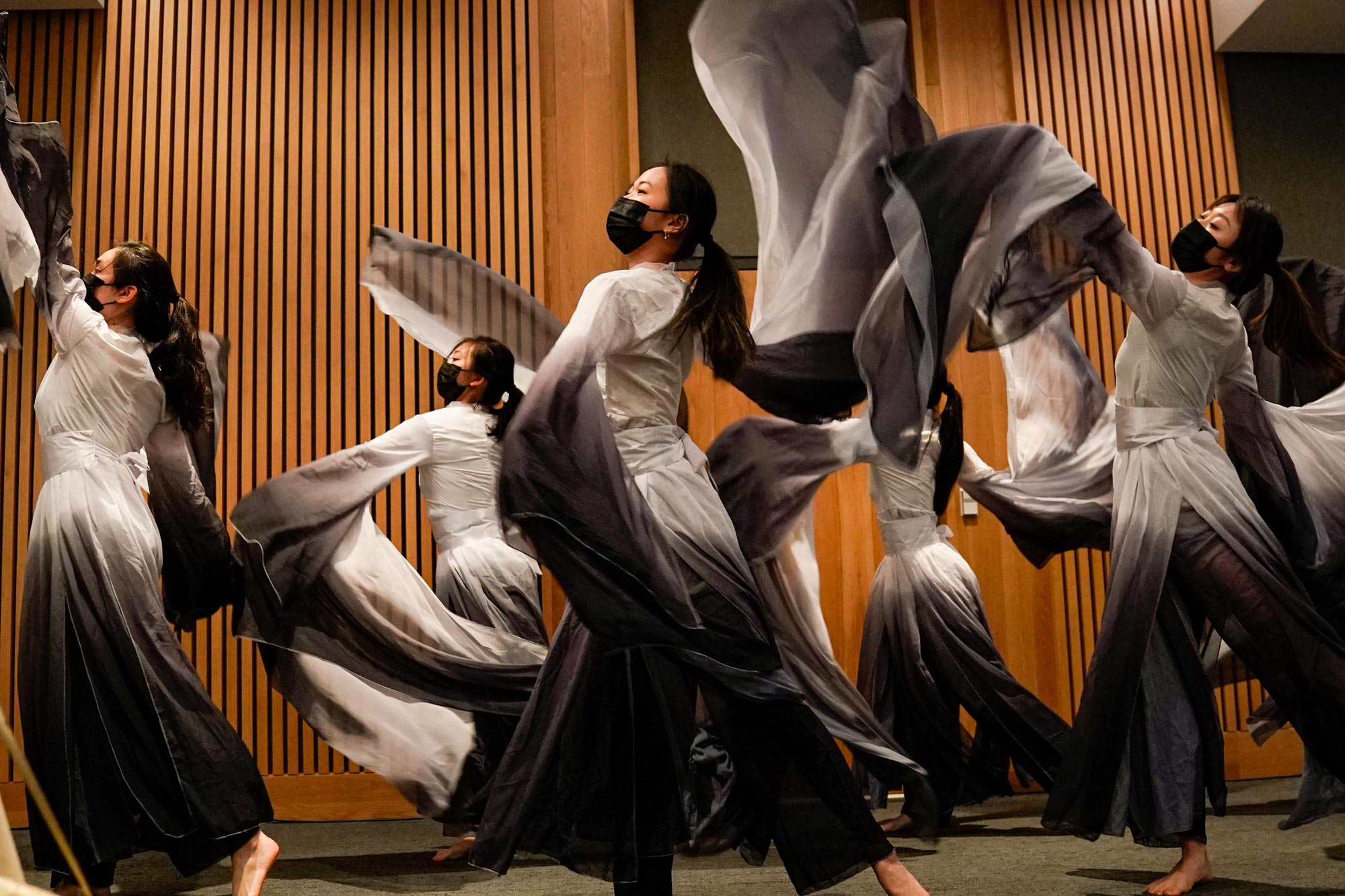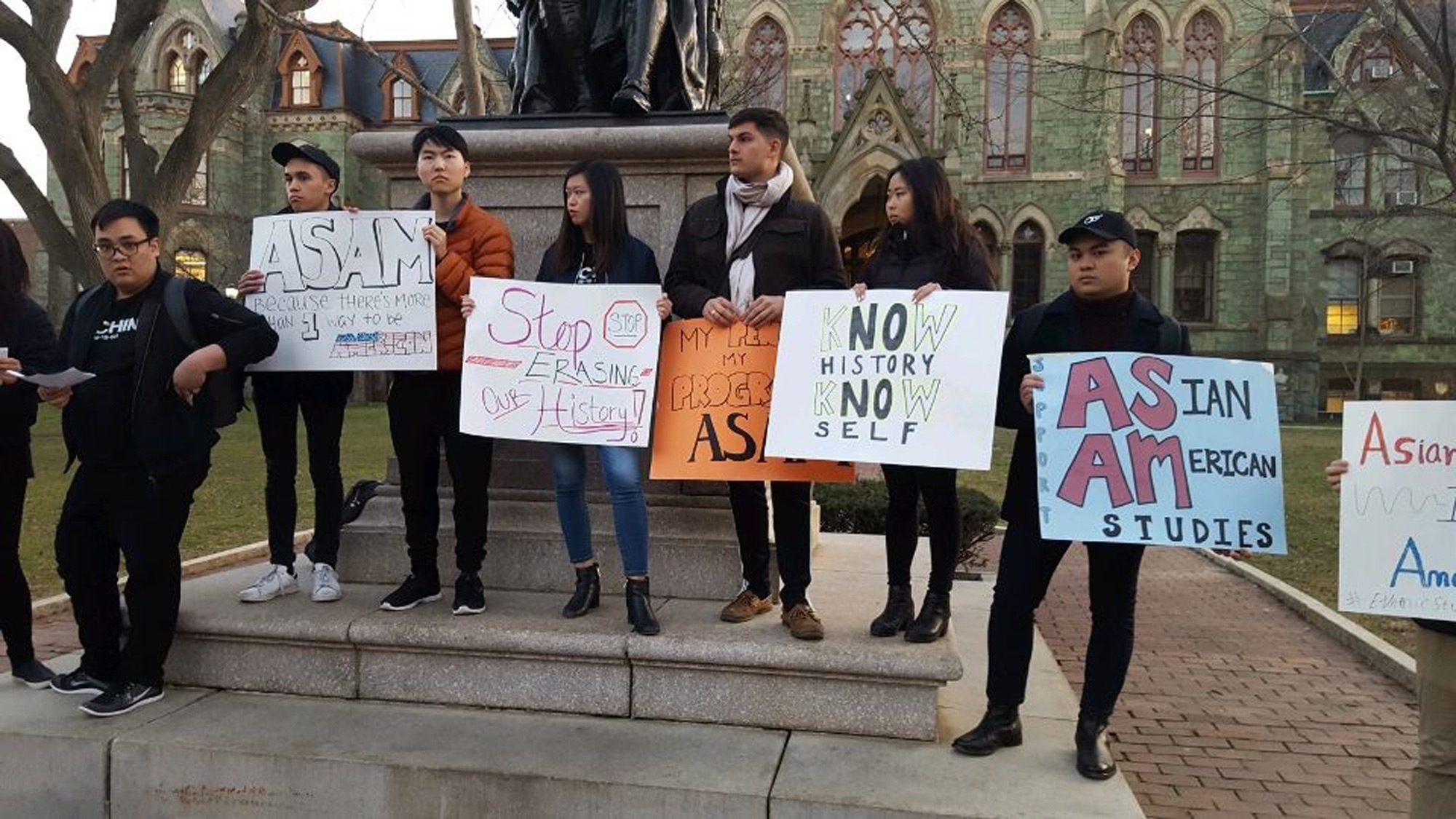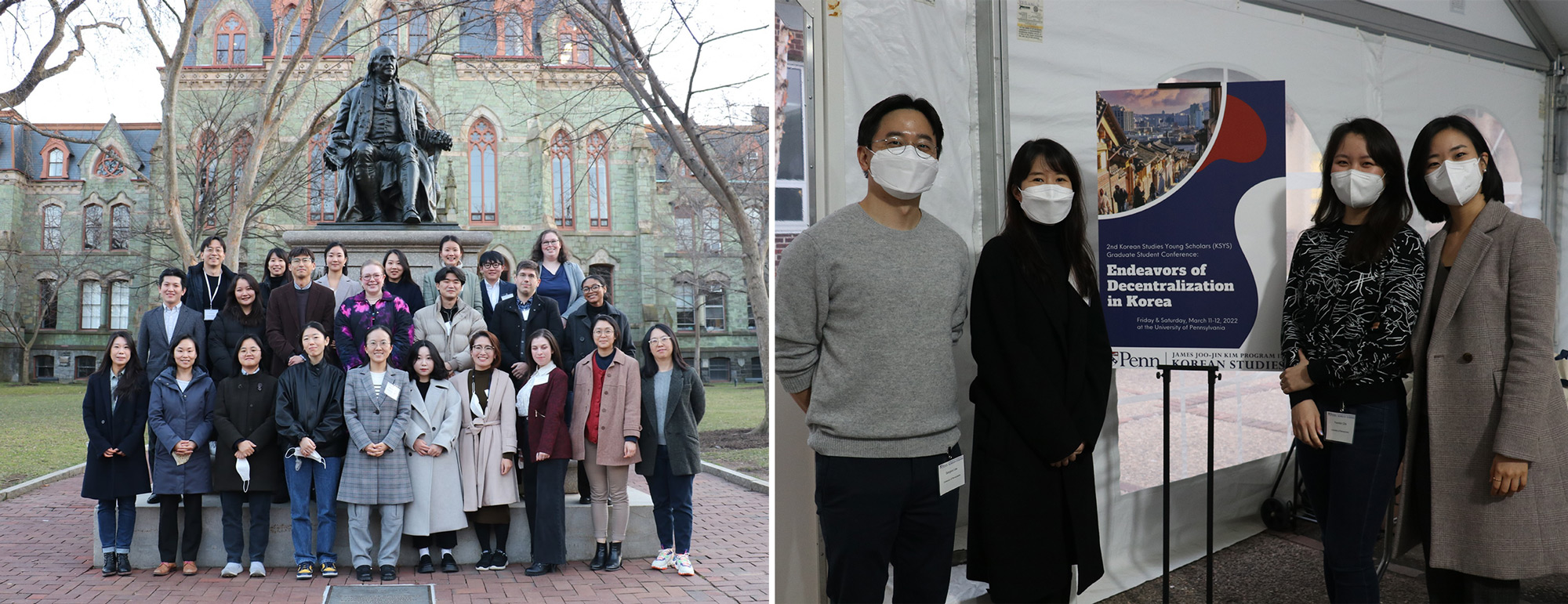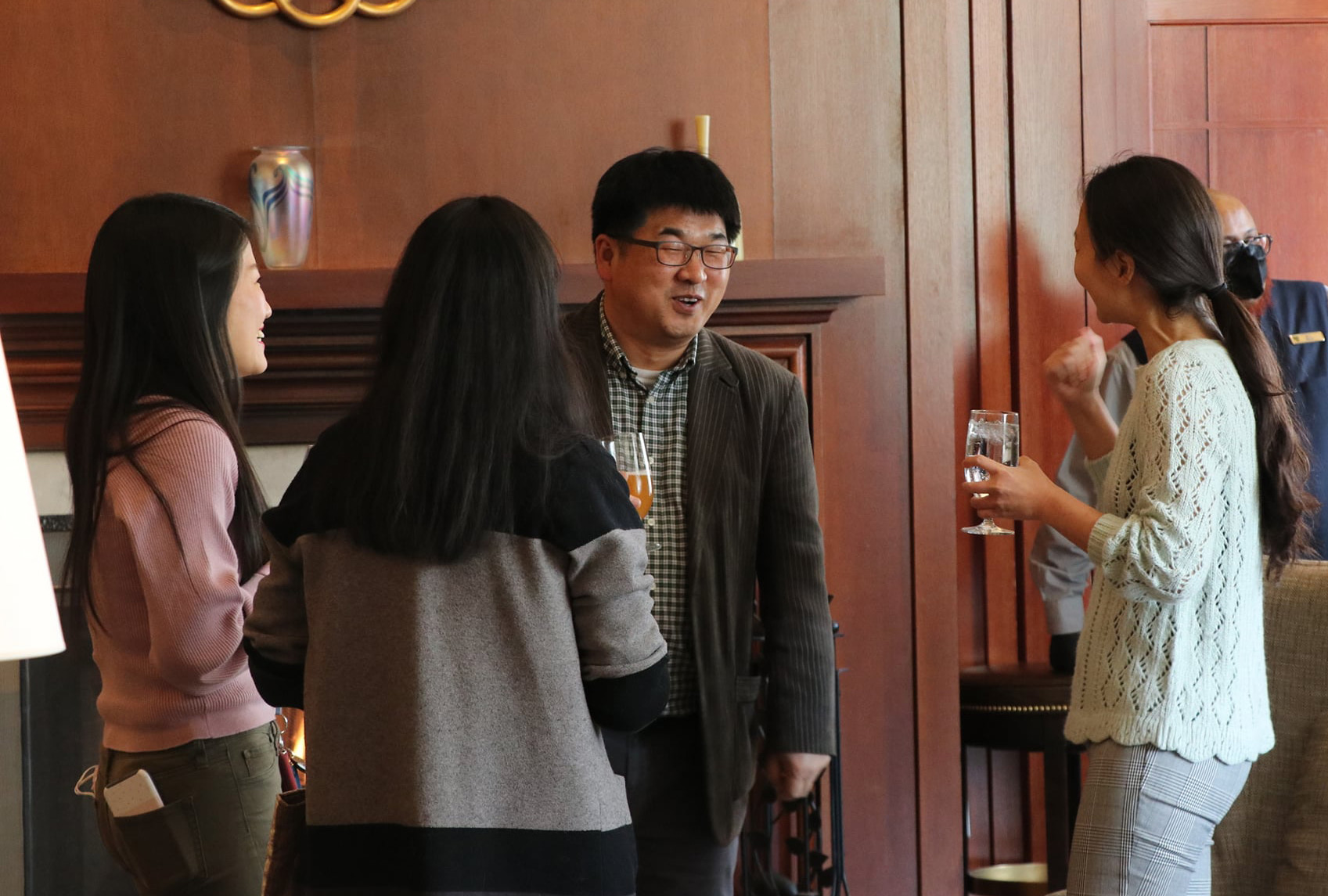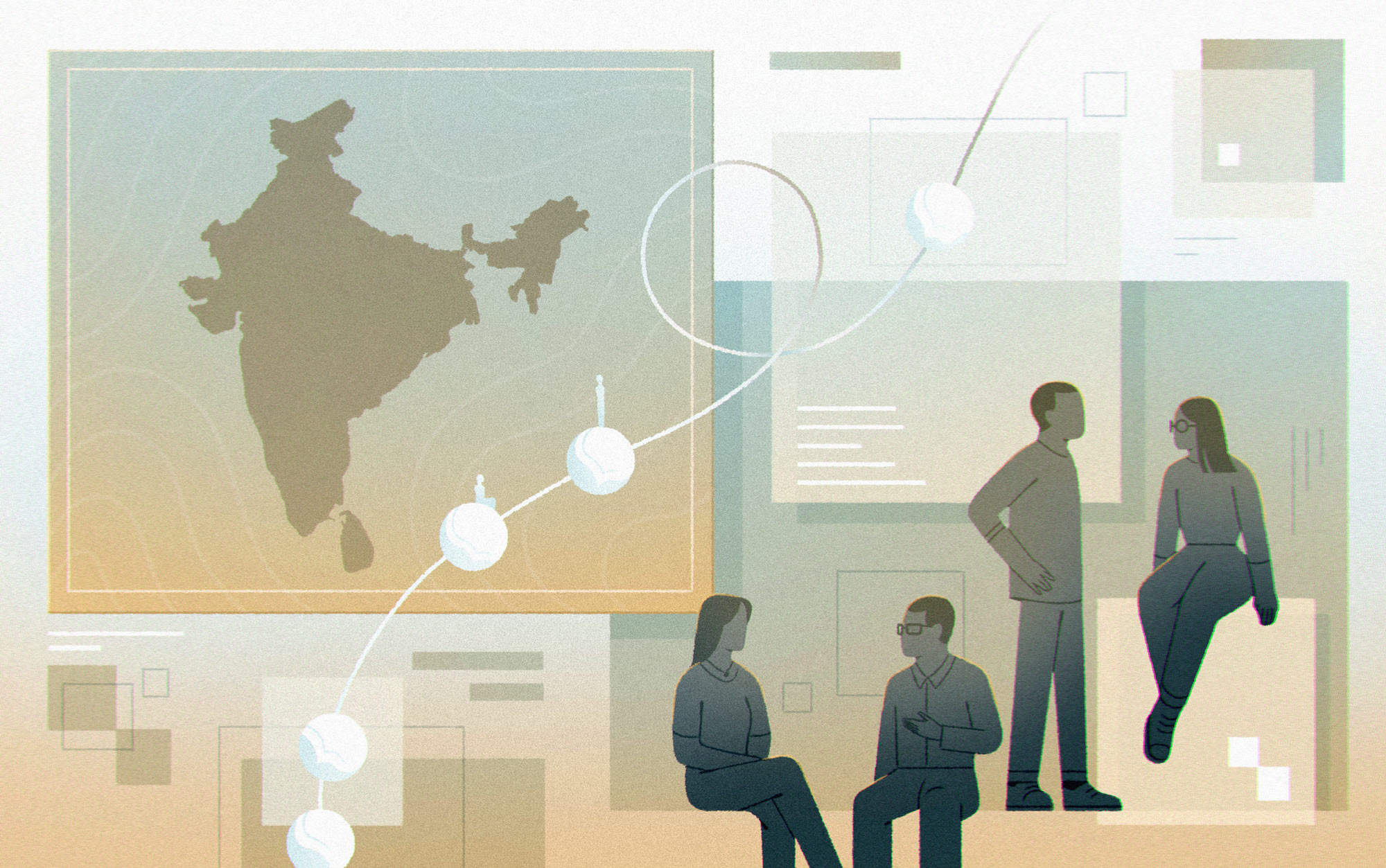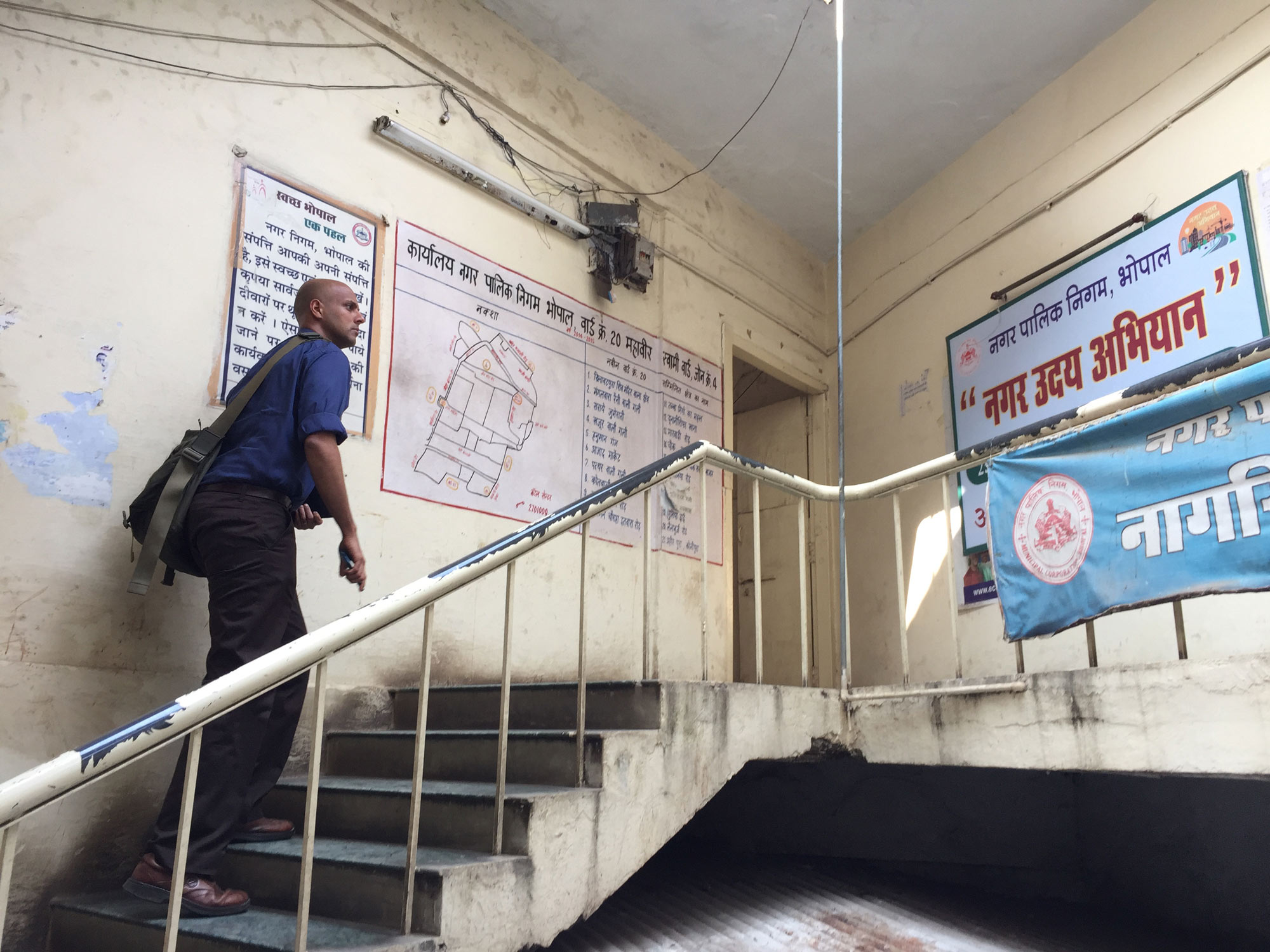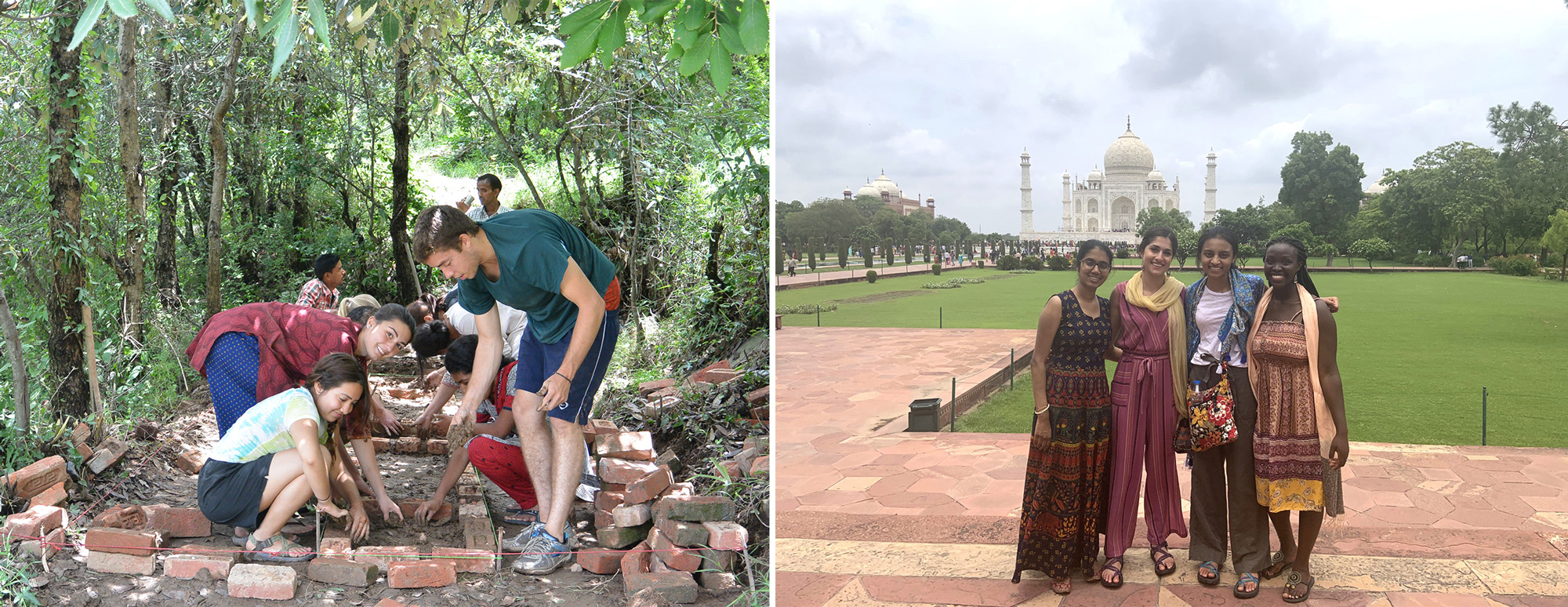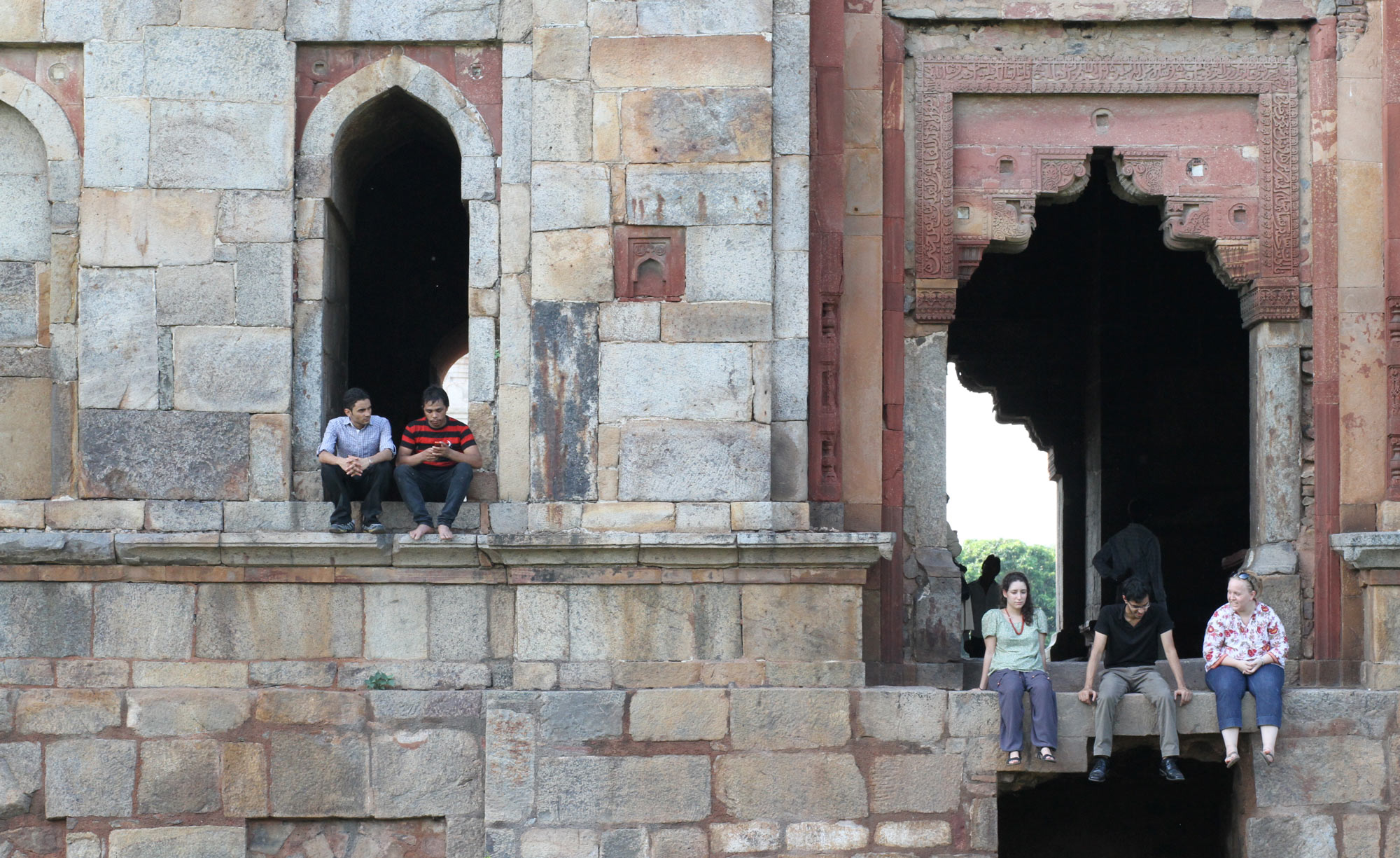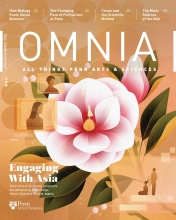Engaging With Asia
Penn Arts & Sciences programs are advancing knowledge about Asia and Asians.
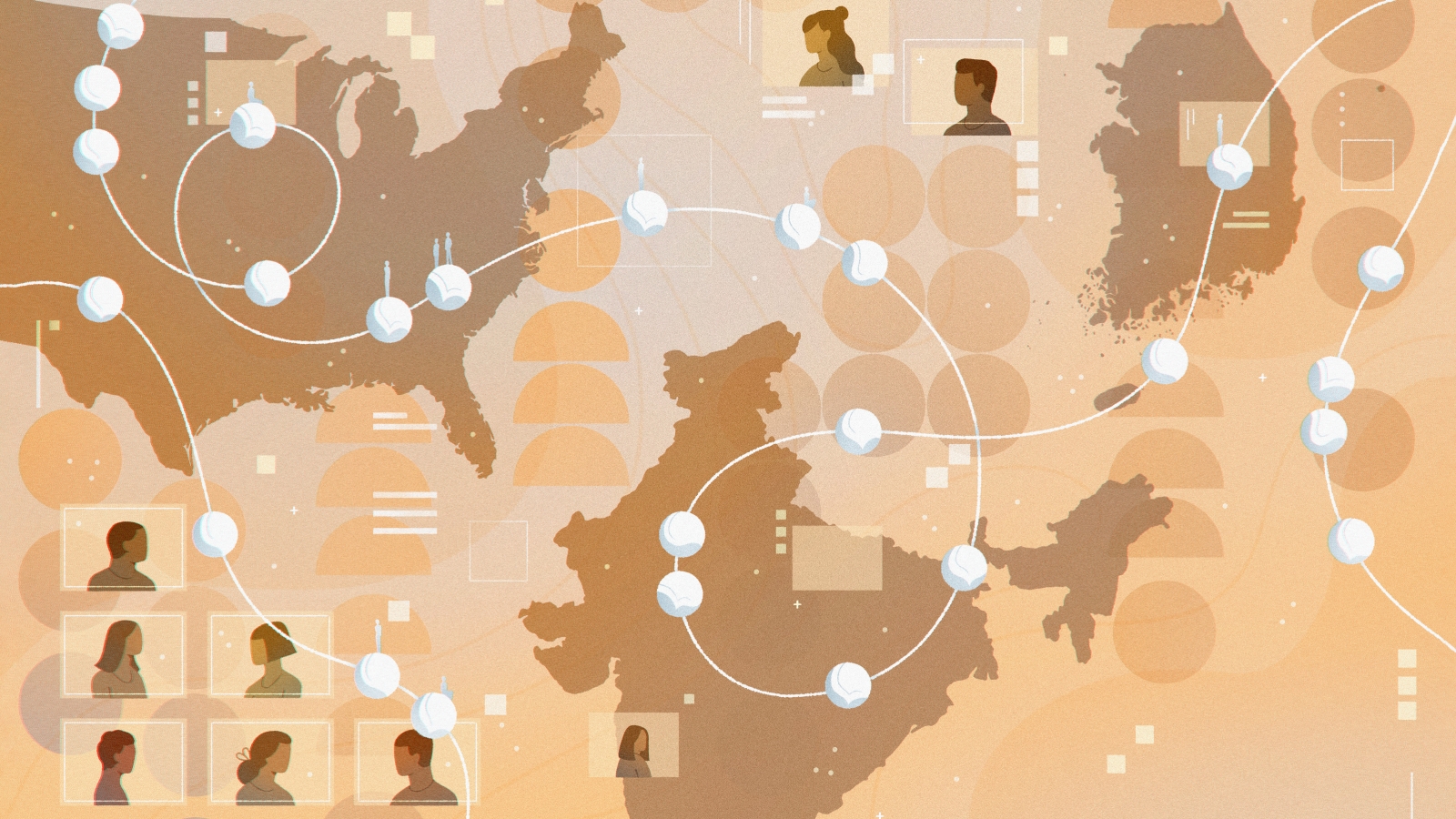
What is “Asian?” In 2020, the U.S. Census counted anyone “having origins in any of the original peoples of the Far East, Southeast Asia, or the Indian subcontinent, including, for example, Cambodia, China, India, Japan, Korea, Malaysia, Pakistan, the Philippine Islands, Thailand, and Vietnam” as Asian—while the United Nations classifies 48 nations as part of Asia, including countries like Russia, Turkey, and Iran.
How do you define a category that includes hundreds of cultures and languages and millennia of history? In 2020, the U.S. press frequently referred to Andrew Yang, who is of Taiwanese heritage, as the only Asian candidate in the Democratic presidential field, despite Kamala Harris’ Indian heritage.
In America, the conversation about Asia, Asians, and Asian Americans has become urgent in the last few years. China, now a global power, is both a trade partner and competitor, and nations such as Japan and Taiwan are also integral parts of our economy. Korea and India are growing in influence. The number of Asian Americans is also surging; according to the Pew Research Center, the U.S. Asian population nearly doubled between 2000 and 2019. Since the beginning of the COVID-19 pandemic, attacks on Asian Americans have increased sharply.
In Asia, America has allies and challengers, trading partners, family, and ancestors. In what some are already calling the Asian century, Asian-focused scholarship and education are vital.
“Asia is the region in which the largest number of the world’s people live and will live,” says Tariq Thachil, Madan Lal Sobti Associate Professor for the Study of Contemporary India and director of the Center for the Advanced Study of India (CASI). “This is where a lot of the world’s future is going to be decided.”
How do you define a category that includes hundreds of cultures and languages and millennia of history?
Penn Arts & Sciences has a long history in the study of Asia. Beginning in the 19th century, the School was one of the first at a university to offer courses in the languages and civilizations of what was then called “the Orient.” That term has been abandoned, and programs have expanded and adapted along with understanding of the area, its political economy, and its cultures. Today, Penn Arts & Sciences focuses on Asia from many angles, including the Department of East Asian Languages and Civilizations and the Center for East Asian Studies, the Department of Near Eastern Languages and Civilizations, the Department of South Asia Studies and the South Asia Center, the Center for the Study of Contemporary China, and the Middle East Center. Three Asian-facing programs—the Asian American Studies Program, the James Joo-Jin Kim Center for Korean Studies, and CASI—are marking milestones and making especially notable changes this year.
“It’s great to have these different organizations,” says Hyunjoon Park, Korea Foundation Professor of Sociology and Director of the Kim Center for Korean Studies, who is looking forward to working more with the Center for East Asian Studies, CASI, and Asian American Studies. “It’s not a competition but a concerted effort to work together on one more level. The connected organization, devoted to each part of Asia—I think that’s a lovely thing to do.”
Asians of America
(By Susan Ahlborn and Kristina Garcia)
People of Asian origin have been in America since Chinese Filipino sailors arrived at the end of the 1500s. A major wave of Asian immigration to the United States began in the 19th century, but the Chinese Exclusion Act of 1882 prohibited virtually all immigrants from China—the first U.S. immigration ban to do so on the basis of race or national origin. Other anti-Asian policies followed until 1965, when the Immigration and Nationality Act ended immigration laws based on ethnicity, race, and quota systems. According to the Pew Research Center, the U.S. Asian population, which was 980,000 in 1960, grew to 3.5 million by 1980 and stands at about 22 million today.
Yet when high school students are taught American history, Asian American representation is invisible, says Fariha Khan, Co-Director of the Asian American Studies Program. “It’s the constitution, the 13 colonies, then we’re back to the founding fathers,” she says. “Maybe students get a day on the Chinese Exclusion Act, a day on the Japanese internment.” The message is that Asian Americans are perpetual foreigners, says Khan, not part of the nation’s foundation.
The miracle of the Asian American movement was that it was pan-ethnic solidarity.
Asian American Studies was purposefully constructed to counter this narrative, says program Co-Director Eiichiro Azuma, Professor of History and Asian American Studies. The program was launched as a result of students pushing for recognition and inclusion in the curricula. At that time, the East Asian languages and civilizations department was called “Oriental studies,” which “made it seem like it was a rug instead of lived experience,” says Khan.
That department’s name was changed in 1992, and the Asian American Studies Program established in 1996. Its 25th anniversary celebrations this spring included a Dean’s Forum conversation between filmmaker John M. Chu, director of Crazy Rich Asians, and David L. Eng, Richard L. Fisher Professor of English and Asian American Studies, and a talk by Cathy Park Hong, author of Minor Feelings: An Asian American Reckoning, along with a full slate of other events and the return to campus of program alumni.
“This 25th anniversary is a really important moment for us to assess our growth and reassess our history,” Khan says. “Ours was a history of struggle and relentless perseverance to be legitimized. It’s important to say, yes, the anniversary celebration is great, but we want to recognize that this was very hard, and it was because of a lot of painful effort that we can stand here today.”
Along with considering countries of origin and the history of Asian immigration and diaspora, Asian American studies looks specifically at the Asian American experience in the United States. This is an intentional approach, says Azuma. “As opposed to other racialized minorities in the United States, Asian American history has a lot to do with what’s called Orientalism,” he says. “Orientalism is a way of thinking that creates the idea of a completely opposite world and peoples, as opposed to the Western world,” where Americans see themselves belonging, he says. “The Asian American Studies program is a challenge to this Orientalist thinking in America.”
Penn Arts & Sciences has multiple departments, programs, and centers that focus on Asia, Asians, and Asian Americans, serving faculty, students, and the community.
The Department of East Asian Languages and Civilizations is made up of interdisciplinary scholars who focus on the humanistic traditions of China, Japan, and Korea.
The Department of Near Eastern Languages and Civilizations engages in the interdisciplinary humanistic study and teaching of the cultures of the Near East (often called the Middle East).
The Department of South Asia Studies combines interdisciplinary expertise in the languages, literatures, histories, and cultures of the region of South Asia, including India, Pakistan, Bangladesh, Nepal, Sri Lanka, Afghanistan, and Bhutan.
Asian American Studies is an interdisciplinary program that explores the historical and contemporary experiences of Asian immigrants and of persons of Asian ancestry in North America.
The Center for the Study of Contemporary China studies the multifaceted political, legal, economic, and social factors that shape contemporary China and its role in the larger world.
The Center for East Asian Studies coordinates and supports East Asia courses, research, and gatherings and offers outreach to educational, business, and professional communities.
The Center for the Advanced Study of India engages in policy-relevant research focused on present-day challenges, serving as a forum and publisher and providing students with opportunities in India.
The James Joo-Jin Kim Center for Korean Studies examines the past and present of Korea through the lenses of social science and humanities, and supports its study at Penn and in the community.
The Middle East Center manages the major and minor in Middle Eastern Studies, and is a hub for research, teaching, public engagement, and outreach to the community and K-12 schools.
The South Asia Center supports faculty and student research, conferences, curriculum development, outreach, and other activities to enhances the study of South Asia.
Past and present languages of Asia taught at Penn Arts & Sciences include Akkadian, Arabic, Avestan/Old Persian, Classical Chinese, Old Egyptian, Gujarati, Modern and Biblical Hebrew, Hindi, Hittite, Classical Japanese, Japanese, Korean, Mandarin, Sanskrit, Sumerian, Syriac, and Urdu.
Bengali, Cantonese, Kannada, Malayalam, Marathi, Panjabi, Pashto Persian, Tagalog, Taiwanese, Tamil, Telugu, Thai, Turkish, and Vietnamese are offered through the Penn Language Center.
“The university is the location for this work,” says Josephine Nock-Hee Park, Professor of English and Asian American Studies, and a member of the steering committee for the program. “It’s a really important way of thinking about activism and the place of intellectual labor, through which we created a new category of American that has this really important political salience today.”
Park says the Asian American identity itself is tied to the U.S. wars in Asia, especially in Vietnam, when Asians in the United States chose to stop identifying as Chinese American or Korean American and joined together. “The miracle of the Asian American movement was that it was pan-ethnic solidarity,” she says. “Which honestly, did not exist before. It’s not like Chinese Americans were fighting against Japanese incarceration.” Outrage at American imperialism and warfare, says Park, “sparked this understanding of Asian in America as something that didn’t need to be bound to these narrow ethnic divisions.”
Penn Arts & Sciences is in the process of hiring at least three new faculty members who will offer additional courses in Asian American studies, says Eng, who is also a member of the program’s steering committee. This will double the number of faculty in the program, meaning more classes, research, and mentorship, along with additional programming and a planned major. “The academy today is more diverse,” Eng observes, “but is it any less segregated? In order to desegregate the university, you have to start with desegregating knowledge. That is what Asian American studies and ethnic studies are doing.”
For many students, Asian American studies classes mark the first time that students have learned about their histories or thought about Asian American issues from a critical and theoretical perspective, says Khan.
“There is so much student interest,” Eng says. Introduction to Asian American Literature and Culture, often taught by Eng or Josephine Nock-Hee Park, is one of the largest class offerings in the English department.
Some students take the class partly to flesh out their sense of their own identity, says Park, “which we’re happy to provide. But we want to show them that this is a field of intellectual inquiry. This is a field with a history, with a critical genealogy. These are skills you can translate to understanding any history. But also, that it’s situated within a broader American, and even global, framework for our students.”
In 2019, Eng co-authored a book with the psychotherapist Shinhee Han on the experiences of Asian Americans. Racial Melancholia, Racial Dissociation: On the Social and Psychic Lives of Asian Americans discusses the feelings of depression, isolation, and panic often felt by Asian Americans and the barriers they experience in seeking psychological help. The model minority myth, Eng notes, “persistently represents Asian Americans as nerdy automatons, technically gifted in math and sciences, continuously working, compliant, wealthy, and exempt from discrimination. In fact, Asian Americans are the most economically stratified racial group in the U.S. More often than not, discrimination against Asian Americans occurs without recognition and without provoking any serious outcry or protest—on the part of others and, most poignantly, on the part of ourselves.”
Asians have long been portrayed in the United States as both super- and sub-human, says Park. “There are long, long, long histories of characterizing Asians as not having a capacity for feeling, as machine-like and robotic. Basically, if you’re sub- or superhuman, you’re not human. This is very actively fueling racism.
“We attack when we think, well, they don’t feel the way we feel,” she continues. “And one of the things that I think Asian Americans have benefited from in ways that are very uncomfortable, is this superhuman image, like, oh, she’s going to be better at stuff, or she’s smarter. But in fact, they’re inseparable from the subhuman. And that’s where the space of the university is a really critical opportunity for all students to not just think but feel beyond those boundaries and biases,” says Park. “We need to be able to read these other expressions, these other experiences, and to see an American commonality.”
The Korean Wave
K-pop, K-drama, K-beauty, K-food: South Korea is a global cultural influencer. The film Parasite made history in 2020 by becoming the first non-English-language Best Picture Oscar winner, Squid Game is a television phenomenon, and even Pod restaurant in University City just rebranded itself as KPod. One of the 26 Korean words recently added to the Oxford English Dictionary, “hallyu,” translates to “Korean wave.”
“It’s hard to say why it has become so globally popular, but I think one thing is the message and the issues they try to address are pretty global issues, like inequality,” says Hyunjoon Park, Korea Foundation Professor of Sociology and Director of the James Joo-Jin Kim Center for Korean Studies. “They’re really highlighting unique features of Korean society and making that well-connected to these important global issues.”
South Korea has transformed in the last three decades, says Park. People are marrying later and divorcing more, though his research has found that divorce is increasingly concentrated among people with less education. More Koreans are going to college, including women, but women’s status has not improved, he says. Korea’s use of technology helped it weather the pandemic, but fertility is falling and the population is aging. “Twenty or 30 years ago, family was available to everyone,” Park says. “Now family has become more expensive to achieve.”
“Many countries are facing issues that Korea has already experienced in a very dramatic way,” Park explains. “It’s a country that tells so many interesting stories about change as well as no change. As a sociologist, I cannot find any country that is more interesting than Korea.”
As one example, he describes the Korean school system. “The Korean’s higher test scores are not because their top students are really doing well, but because their bottom students are so strong,” he says. Park credits this to policies like randomly assigning students to schools in the district and requiring teachers to change schools every five years. Korea Center research “gets into real situations to really understand the source of education success in Korea, as well as education problems,” he says.
The Korean Studies program in Penn Arts & Sciences has a long history. It was strengthened by a major gift in 2011 from James Joo-Jin Kim, W’59, G’61, GR’63, along with an anonymous gift to establish the Moon Family Post-Doctoral Fellowship in Korean Studies. Park reports that many former post-docs have already become leading scholars in the field.
Now Kim has made another transformative gift to the program, creating the James Joo-Jin Kim Center for Korean Studies and providing long-term support for academic and community-focused activities. The gift will let the school recruit an endowed professor in Korean studies, launch a global conference on Korea, create fellowship opportunities for graduate and undergraduate students, and sponsor a global forum that will connect Kim Center scholars with Korean alumni and parents.
Park wants the center to be “truly integrative,” combining social sciences with history and art to study Korea and Koreans. Now is a good time to bring some social scientific perspective, he says, because contemporary issues like poverty, inequalities, and pandemics require this comprehensive perspective.
A global view for the Kim Center is important, Park says, because Korea cannot be understood within itself. “We like to see Korea in the perspective of the connections with other East Asian societies, but also in a global perspective.”
The center will also engage locally, collaborating with the Asian American Studies program to work with local communities in Philly and on the East Coast. One new project, Koreans in Philadelphia, will involve research and cultural events to highlight the legacies and achievements of the Korean American community in the region. Park also wants to provide resources for local schools, to help teachers respond to growing interest in Korean culture.
New fellowships will allow undergraduates to conduct independent research, interact with faculty, and participate in cultural activities through the year. Ultimately, Park hopes to be able to take students to Korea for immersive experiences.
We were stunned at how worldwide the audience for Korean studies is.
The Kim Program was already known for its Korean Studies Colloquium, which brings scholars together to share their ongoing research. The colloquium went virtual during the pandemic, and its reach became truly global. “Every colloquium, people logged in from Europe, Latin America, and Asia,” says Park. “We were stunned at how worldwide the audience for Korean studies is. We were even able to do them during the summer. We never stopped.”
Since Park became director in 2019, the center has also begun offering two annual conferences, one focusing on social sciences and one on humanities, as well as a conference for graduate students. In March 2022, it held its first in-person conference in two years, with grad students gathering once again to share research and make connections.
Park says the timing is perfect for transforming the center: “People know lots of things about Korea, and they want to know more.”
A Passage to India
With 1.4 billion people, India is the world’s most populous democracy, and it’s on track to become the most populous nation by 2030. Its geography ranges from mountain to desert, it’s home to thousands of ethnic groups and hundreds of languages, and its population is young. It’s gathering strength economically and is a nuclear power, but faces social, economic, and environmental challenges.
When the Center for the Advanced Study of India (CASI) was founded 30 years ago, it was the first academic research center in the United States focused on the study of contemporary India. CASI is still a rarity, says director Tariq Thachil. “I think there is recent flourishing of spaces devoted to the study of India in some way or the other, which is great,” says Thachil, an associate professor of political science and the Madan Lal Sobti Professor for the Study of Contemporary India. “But I don’t know that there are any still that replicate the mixture of programming, research, visitors, and presence in India that we offer.” And 30 years of work has allowed CASI to build a rich and diverse community of India scholars and specialists associated with the center.
CASI is also unique in its two-way exchange of knowledge between India and the United States, says Thachil. “The majority of CASI’s visiting scholars are not professors from the U.S., but scholars based in India to whom CASI is a home in the U.S.,” he says. The University of Pennsylvania Institute for the Advanced Study of India (UPIASI), CASI’s counterpart institution in New Delhi, furthers this back-and-forth flow. Established in 1997, UPIASI has a strong research program and presence of its own under the leadership of Eswaran Sridharan, GR’89. Through UPIASI, CASI sends researchers, students, and faculty to India and showcases their research there.
Thachil wants to build on CASI’s policy-relevant research tradition but grow it into a more multipronged and lab-like setting.
Since its founding, CASI has provided policy-focused research and programs on India. Students interact with visiting scholars and can work and conduct research in India. CASI also acts as a public forum by hosting seminars, workshops, and conferences, and is home to the internationally read India in Transition. Over the years, says Thachil, it has added new dimensions to what it does, but also pivoted to reflect changing times.
Thachil wants to build on CASI’s policy-relevant research tradition but grow it into a more multipronged and lab-like setting. One of his goals is to expand the number of active research agendas and the number of disciplines represented, and to increase collaboration, by making a home for innovative young scholars. Next year, for example, CASI will have not one but three postdoctoral fellows: a historian, a political scientist, and an anthropologist. They will collaborate on conferences and workshops, “but they each have distinct research agendas. And so they’ll make those things part of what CASI does,” Thachil says.
To expand CASI’s role as a conversation hub, the center will launch a new global fellows program that, combined with its visiting fellows, will bring both distinguished and new voices to interact with students and faculty.
Thachil also wants to broaden the already robust student engagement with the center. He took over as director in July 2020, during the first months of the pandemic. It forced him to delay some of his plans while heightening his focus on students and young scholars.
“These two years, they’ve been hard on everyone,” he says. “But as a faculty member, I can’t help but think of how hard they’ve been for young scholars. That’s why we’re on a university campus, not a think tank in D.C.” It’s part of the reason he’s expanding the postdoc program, as well as offering visiting fellowships and “the lion’s share” of seminars to untenured faculty, so they have places to present their work.
The virtual programming CASI offered during the pandemic brought in a global audience that hasn’t dropped off. “I think that’s here to stay,” Thachil says. “It’s allowed us to have a lot of scholars from India and audience members from across the world.” But he’s looking forward to gatherings back in the center, both informal and higher-level academic debates.
India in Transition covered the pandemic in India with a special COVID-19 series. The CASI visiting fellow coming in the fall of 2022 is a young data journalist whom Thachil says has been doing pioneering work tracking how many Indians are losing their lives to COVID, and to what degree official statistics can be trusted. “It will take some time to even understand the scale of what happened to India,” says Thachil. “So someone doing critical work like that, we want to give her support, and a platform.”
CASI can do all this because it’s an academic center, says Thachil. “Centers like CASI are often the homes of interdisciplinary spaces. They bring people to the university community that a regular departmental route might not be appropriate for: journalists, policy makers, bureaucrats, civil society actors. I think that’s critical,” he says.
“And we are often the connective tissue through which communities actually meet each other,” he continues. “I have connected graduate students to faculty, where they’re all on Penn campus, but they didn’t know each other existed, and yet they had interests in common.”
He finishes, “Thirty years of CASI have really been an exercise in energy and entrepreneurialism.”
